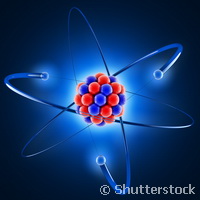Training Europe's future scientists in atomic scale research
How can you measure the distance between atoms, or even the space inside an atom? With a 'ruler' the size of an atom of course - and this is where neutron scattering and muon (an elementary particle similar to an electron) spectroscopy come in. These two innovative methods can help scientists investigate the structure and dynamics of materials at the atomic scale, including magnetic properties. Advanced solutions to the challenges that confront our technology-based society - from energy and environment to health - are crucially dependent on advanced knowledge of material properties down to the atomic scale. Both neutron scattering and muon spectroscopy can be applied to a wide range of research in such fields as engineering and materials science, physics and chemistry, earth and environmental sciences, cultural heritage and biomedical sciences. They are thus crucial to the creation of the European Research Area. A major EU-funded project entitled the Neutron Scattering and Muon Spectroscopy Integrated Initiative (NMI3-II) got underway last year, continuing the ground breaking work of the previous project (NMI3). One major objective of is to provide European scientists with access to the full range of neutron and muon instrumentation and expertise that exists, in order to push forward collaborative research. In addition, the NMI3-II project also aims to attract young people to the field of neutron and muon science. This particular initiative, called NaMES (Neutron and Muon European Schools), integrates and supports a number of high-quality schools, in effect creating a distributed training facility for neutron and muon scattering in Europe. Approximately 400 early career European researchers already receive training via one or more of the 14 NaMES schools each year. During the first evaluation meeting earlier this year, it was concluded that all NaMES schools so far undertaken were rated positively. The schools supported by NMI3-II complement each other in terms of the topics presented, locations and dates. This diversity makes it possible to address the disparate needs of the students - whether they require general or specialised training, either in theory or practical aspects, with or without inclusion of synchrotron radiation techniques. The schools' directors meet to share knowledge and experience, receive feedback and decide on future directions. The NaMES schools are in high demand, with a large number of European researchers seeking training in neutron and muon techniques. This collaborative activity will continue to ensure that the European neutron and muon schools improve their output thanks to a regular exchange of information, coherent organisation, and proper publicity. Hundreds of experiments in the field of materials science have been carried out within the NMI3-II project. Major breakthroughs are not normally made by single experiments alone, but through the combined results of many studies, together with results obtained from other complementary experiments. It is expected that the NaMES initiative will help to establish expertise in the field of neutron scattering and muon spectroscopy, opening the door to more innovations in the future. The NMI3-II project, which began in February 2012 and will run until 2016, will receive EUR 13 349 994 in EU funding.For more information, please visit: NMI3-II http://nmi3.eu/ Project factsheet
Countries
France



